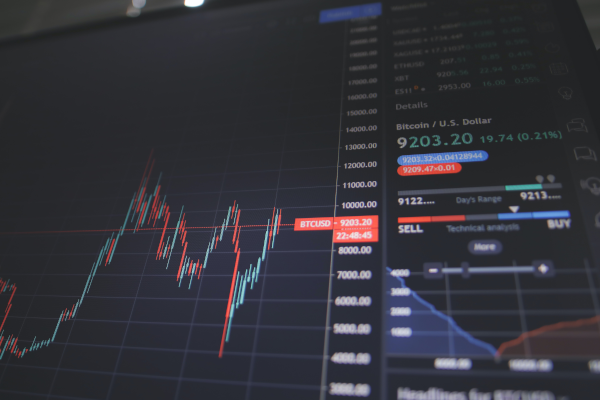This is a guest contribution by Tom Hutchinson, Chief Analyst, Cabot Dividend Investor
The recent quarterly GDP report marks the second consecutive quarter of economic contraction. Since World War II, there have never been two negative quarters and not a recession. Meanwhile, inflation still rages at a 40-year high; the Fed will have to continue to aggressively raise rates to tame it.
But the market loves it.
Is this just a bear market rally or the beginning of something beautiful? That’s the trillion-dollar question. The market anticipates six to nine months into the future. Lately, investors are sensing an end to the rising inflation and hawkish Fed conundrum that has plagued the market all year. By then, the market sees inflation down and falling a Fed that is done hiking rates, maybe even talking about lowering them.
Hopefully, that rosy scenario plays out. But it might not. It’s very possible that this inflation can’t be tamed with a soft landing or mild recession. The Fed may have to be more aggressive than currently anticipated and drive the economy into a deeper recession. Perhaps, the Fed won’t have the belly for a deeper recession and inflation will prevail.
We could have a prevailing environment of recession or inflation, both, or neither. It could be a bear market that has not yet made the lows or the beginning of a new bull market. These multiple possibilities make investing tricky because different stocks thrive and struggle under each scenario. What can you do?
Fortunately, there is an income stock that can thrive under any of these scenarios. You can still confidently invest in a highly uncertain environment with multiple possibilities going forward with an all-weather infrastructure stock that may be just what the doctor ordered.
Brookfield Infrastructure Partners (BIP)
Bermuda-based Brookfield Infrastructure Partners is one of the largest globally diversified owners and operators of infrastructure assets in the world. The master limited partnership (MLP) focuses on high-quality, long-life properties that generate stable cash flows, have low maintenance expenses and are virtual monopolies with high barriers to entry.
Infrastructure is defined as the basic physical structures and facilities needed for the operation of a society or enterprise. It includes things like roads, power supplies and water facilities. Not only are these some of the most defensive and reliable income-generating assets on the planet, but infrastructure is rapidly becoming a more timely and popular sub-sector.
The world is in desperate need of updated infrastructure. Developed economies have badly aging systems in need of replacement and emerging markets have infrastructure that is woefully insufficient to accommodate growing urban populations and more advanced economies. The G-20’s global infrastructure hub estimates that a global investment of $94 trillion will be needed over the next several decades, which is a big opportunity for this income stock.
The private sector is an essential part as governments don’t have all those trillions lying around. Limited partnerships, giant sovereign-wealth funds, and multilateral and development-finance institutions are raising billions of dollars a year for infrastructure investments. It’s almost becoming a new assets class.
As one of the very few tested and tried hands, BIP is right there. It’s been successfully acquiring and managing these properties for more than a decade in a way that has delivered for shareholders.
Brookfield operates a current portfolio of over 1,000 properties in 30 countries on five continents. The partnership operates four segments: Utilities, Transport, Midstream (energy services) and Data.
Assets include:
- Toll roads in South America
- Telecom towers on five continents
- Railroads in Australia and North America
- Utilities in 9 countries
- Midstream energy assets in the U.S. and Canada
- Ports and transportation terminals in Australia, North America, and the U.K.
- Data centers on five continents.
BIP originally began trading in 2008. How has the formula worked out for this income stock?
The earnings compound annual growth rate (CAGR) has been 15% from 2009 to 2022. Since the 2008 IPO, BIP has returned 912% (with dividends reinvested) versus a return of 284% for the S&P 500 over the same period. That’s more than three times the return of the overall market. And those returns came with significantly less risk and volatility than the market.
There is every reason to believe the stellar performance will continue in the future.
The earnings breakdown by segment (funds from operations) is Data (10%), Utilities (30%), Midstream energy (30%), and Transportation (30%). In terms of geographical earnings, distribution is North America (44%), Europe (18%), South America (19%), and Asia Pacific (19%).
Brookfield has embarked on an asset rotation strategy over the past several years which involves selling more mature assets and buying higher-margin properties. The fastest growing segments are Data, as technological proliferation necessitates more cell towers and data centers, and Midstream, where gas and oil infrastructure is insufficient in North America.
The partnership made a large purchase of Canadian pipeline company Interpipeline last year. That acquisition is already boosting the bottom line as earnings (measured by funds from operations) soared 30% in the last reported quarter.
The Distribution
BIP currently pays a $0.36 quarterly dividend per share, which translates to $1.44 annually and a yield of 3.5% based on the current price of $41 per share. Management is targeting 6% to 9% annual payout growth going forward. It should be able to do it because the distribution has grown at a CAGR of 10% per year since 2009.
The distribution is backed by a payout ratio in a targeted range of 60% to 70% of FFO, a low ratio for an MLP. It is also well supported by the fact that 90% of revenues are from regulated or contracted businesses. It also sports investment-grade ratings.
But it is in the form of an MLP, which has certain funky tax implications including requiring a K1 form at tax time. If you don’t like that, you can buy the same income stock in the form of a corporation under the symbol BIPC on the NYSE. The price is higher and the yield lower (3.1%), but its distributions are taxed as ordinary dividends.
All-Weather
The vital nature of the assets insulates earnings from economic ups and downs. People still heat their homes and use the internet even in a recession. It’s a classic defensive, recession-resistant business. Inflation shouldn’t be a problem either as 70% of revenues are indexed to the inflation rate with automatic adjustments. If a bull market ensues, that’s fine too. BIP has more than tripled the returns of the overall market in an overwhelmingly bull market environment over the last 14 years.
Additional Reading
For more quality dividend stocks, the following lists may be useful:
- The Dividend Aristocrats: S&P 500 stocks with 25+ years of consecutive dividend increases.
- The High Yield Dividend Aristocrats List is comprised of the Dividend Aristocrats with the highest current yields.
- The Dividend Kings List is even more exclusive than the Dividend Aristocrats. It is comprised of 45 stocks with 50+ years of consecutive dividend increases.
- The High Yield Dividend Kings List is comprised of the 20 Dividend Kings with the highest current yields.
- The High Dividend Stocks List: stocks that appeal to investors interested in the highest yields of 5% or more.
- The Monthly Dividend Stocks List: stocks that pay dividends every month, for 12 dividend payments per year.
- The 20 Highest Yielding Monthly Dividend Stocks: Monthly dividend stocks with the highest current yields.
- The Dividend Champions List: stocks that have increased their dividends for 25+ consecutive years.
Note: Not all Dividend Champions are Dividend Aristocrats because Dividend Aristocrats have additional requirements like being in The S&P 500. - The Dividend Contenders List: 10-24 consecutive years of dividend increases.
- The Dividend Challengers List: 5-9 consecutive years of dividend increases.
- The Complete List of Russell 2000 Stocks: arguably the world’s best-known benchmark for small-cap U.S. stocks.
- The Best DRIP Stocks: The top 15 Dividend Aristocrats with no-fee dividend reinvestment plans.
- The 2022 High ROIC Stocks List: The top 10 stocks with high returns on invested capital.
- The 2022 High Beta Stocks List: The 100 stocks in the S&P 500 Index with the highest beta.
- The 2022 Low Beta Stocks List: The 100 stocks in the S&P 500 Index with the lowest beta.





